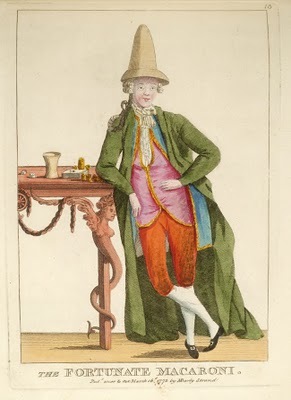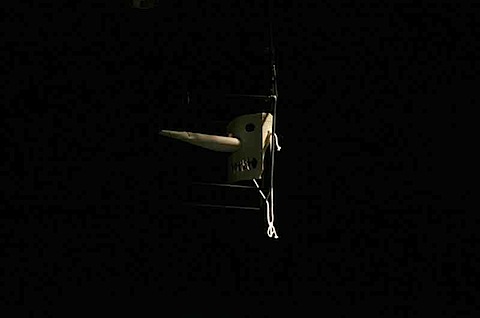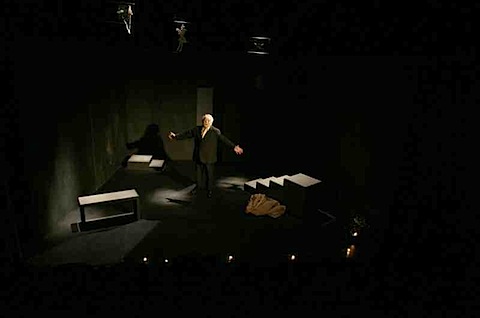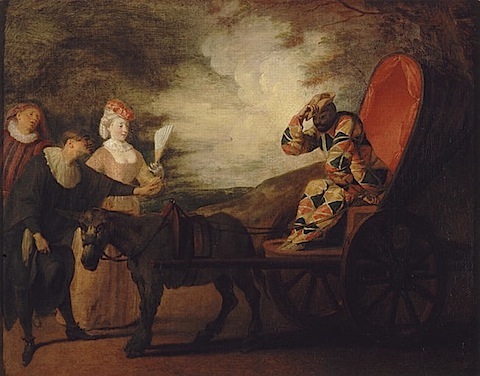
Watteau Arlequin, empereur dans la lune
Nantes musée des BA
N’est pas Mario Gonzalez qui veut, n’est pas un Trésor National vivant qui veut.
C’est ce que je me disais après avoir assisté à ce spectacle .
Je n’ai pas vraiment souffert ni soupiré de tant d’académisme…
Poncifs sur poncifs, de l’opéra de Pekin, au Kabuki, du cheval cher à Jean -Louis Barrault au corps dont les membres prennent une autonomie inquiétante ( normalement ) et pas pendant 4 heures.
On est loin de la polenta portée par Arlequin et qui transmet au corps de ce dernier tout son tremblement.
Passons les cucuteries parlées de la fin ( mon grand-père et moi .. Aiuto!!!!!), et aussi celles du début (” je cherche ce qu’il y a au fond de moi”-en tenant un verre et en inspectant l’eau qu’il contient). Aiuto!!!!!!
Je ne lis pas les trucs explicatifs avant . Mais j’avais tout bon.
Et c’est justement cela qui me fait enrager: Deviner que le mec a suivi les cours de Gonzales, et devant moi ” Un produit “Institut Français”, qui a voyagé ça et là pour suivre l’enseignement de maîtres ( qui doivent être over bookés tant ils sont sollicités…)
Ne manquait que le maquillage face au public.
Pédagogique sans doute ce machin. Aucun charme.
Je déteste le mime et tout le Saint-Frusquin lorsque c’est” ça”.
Sans distance aucune, sans recul. “De l’application directe du cours”
Bon le voilà rhabillé pour jouer il dottore ou Brighella.
Je crois que je préfère la boxe!!
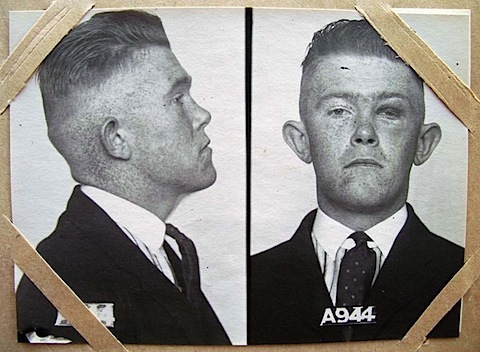
Après c’était agréable de partager au Rostand désert , une omelette “saignante” comme nous l’avions demandé.
